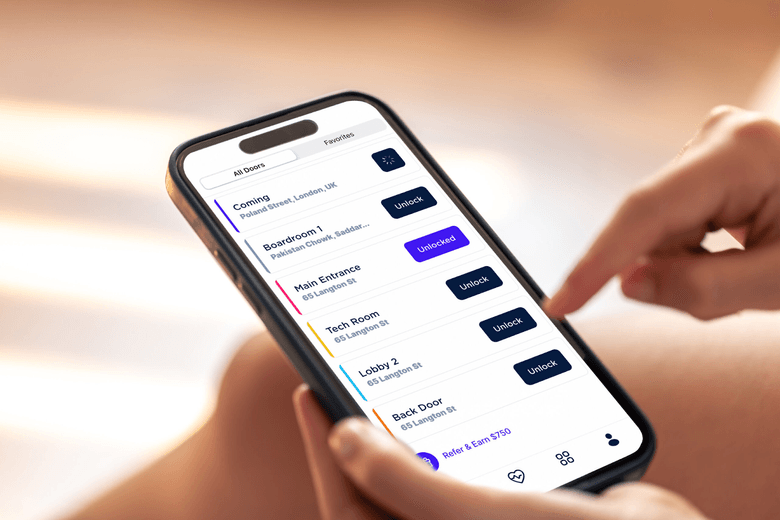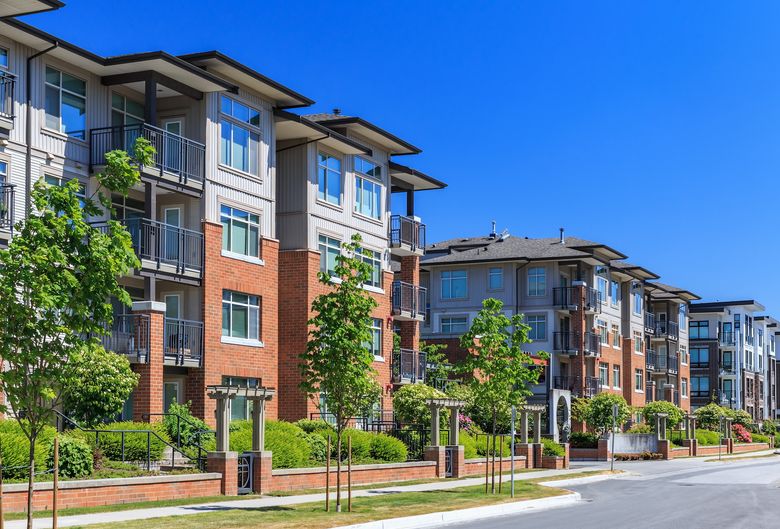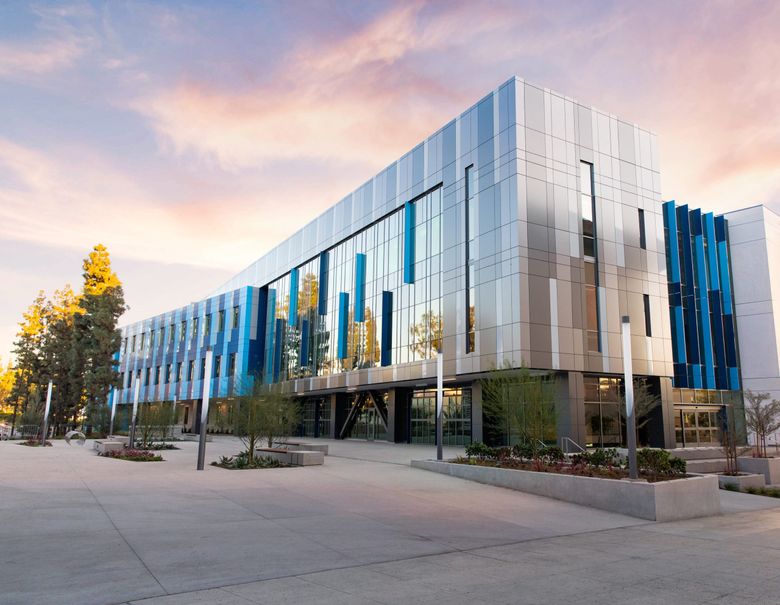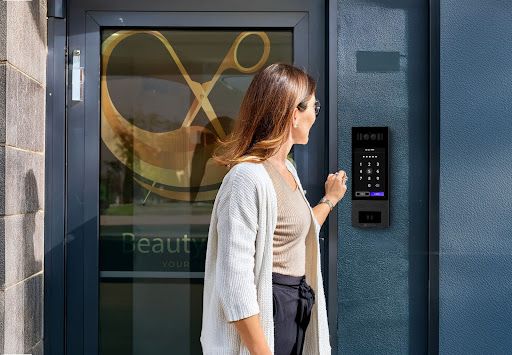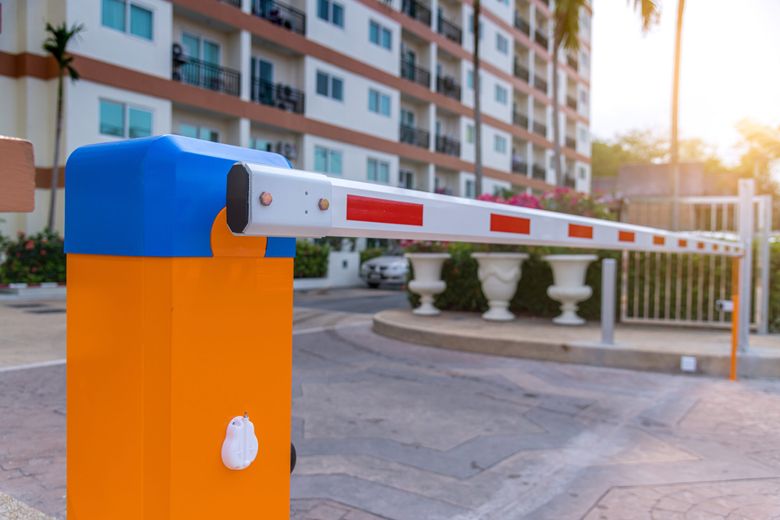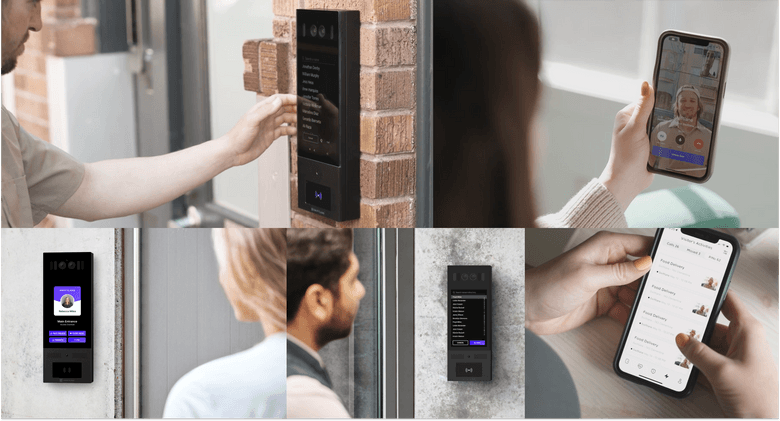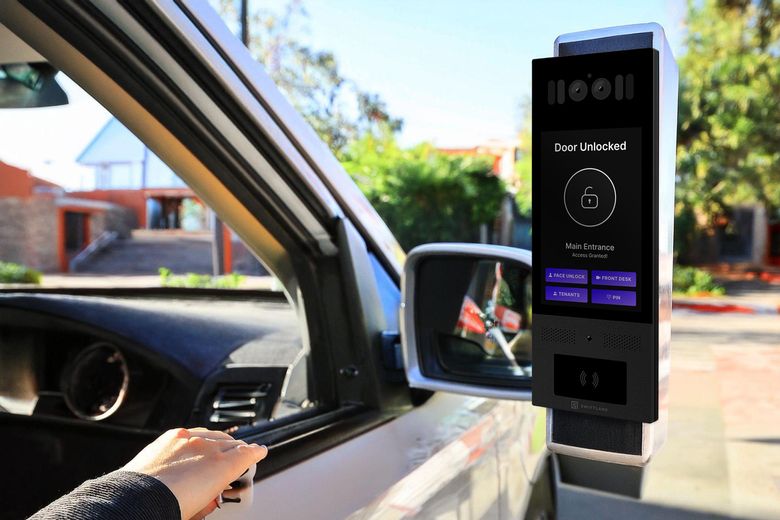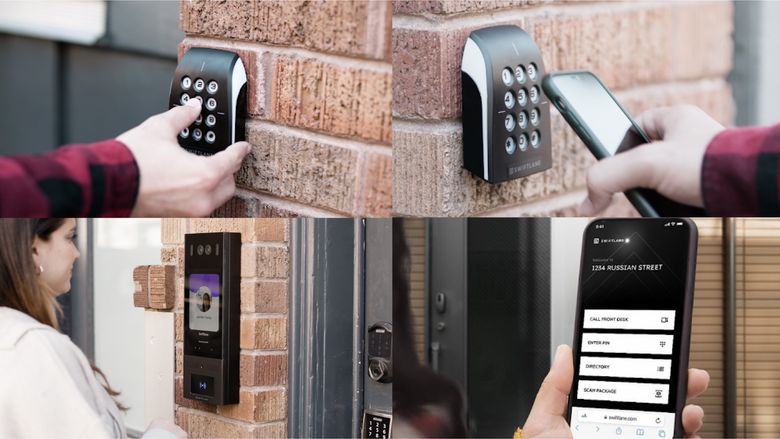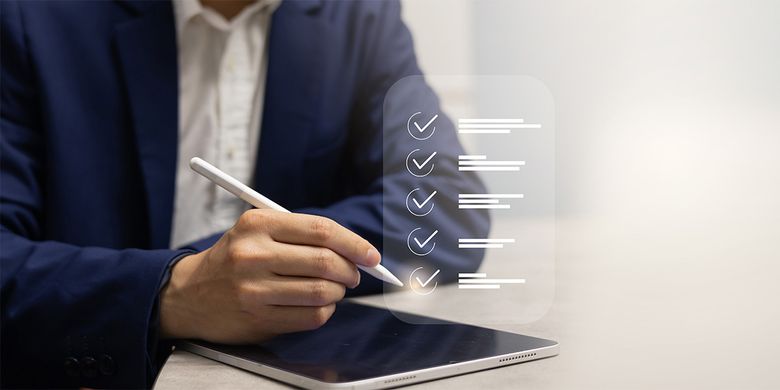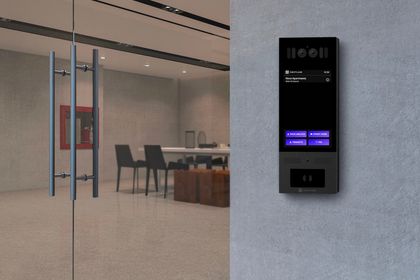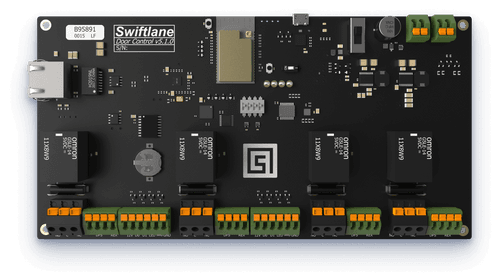Locks and keys have been the standard for controlling access for so long that they’ve turned into everyday metaphors: “unlock your potential,” “the keys to success,” “working in lock-step.” However, since the advent of the digital consumer age, home and condo owners, apartment tenants, and office and retail tenants including salon suite owners have come to expect something more advanced than the clinking of a key when securing their premises. Owners and managers of today’s connected buildings seek modern digital access control software to replace locks and keys.
Today, having the right access control software plays a central role in how people move through spaces securely and conveniently. Whether it helps tenants use their smartphones to open doors, drivers open a gate via Siri or CarPlay, or lets a building manager add or remove tenants with ease, it all comes down to having the best software. Property managers are quickly discovering that the quality of the access control software in their buildings can significantly impact tenant satisfaction and help maintain high occupancy rates.
This guide breaks down what access control software does, how it benefits property stakeholders, key use cases, top offerings on the market, and what to look for in a solution.
Table of Contents
- What is Access Control Software?
- Use-Cases Across Property Types
- Management Software
- Benefits for Property Owners and Managers
- Access Control Apps for Users (Homeowners, Condo Owners, and Building Tenants)
- Vehicle Access Control Software: An Overlooked Component
- Five Major Players in Access Control Software
- What to Look For in Access Control Software
- Conclusion: Rethinking Access as a Service
What is Access Control Software?
Access control software refers to the digital platforms that interface with and control access control hardware in a building. The software governs who is allowed to access specific parts of a property, when, and under what conditions. The software also provides the interface by which tenants, owners, and property managers interact with the entire access control system. These systems typically manage:
- People Access – Residents, tenants, staff, and visitors accessing doors, gates, elevators, and amenity spaces in any type of building, from single-family homes and apartments to retail centers and large office towers.
- Vehicle Access – Cars entering parking garages or gated communities via license plate recognition, RFID, keypad codes, or other technology.
Access Control Software vs. Hardware
Many access control hardware manufacturers have tailor-made software that operates on their systems. Hardware includes all the physical components of access control, such as intercoms, RFID scanners, electronic door locks, keypads, and automatic gates, as well as the cables, Wi-Fi, or other networks that connect these components.
The software runs on top of all this hardware and manages its use. For property managers, it typically includes a platform that manages the back-end database of user permissions and passcodes and the interface by which building staff can program the system and set unique permissions for each entry point. For the users, like building tenants and homeowners, today’s access control software is usually centered on a smartphone app that lets users manage locks and entry points and remotely grant access for visitors.
- User-Facing Apps
The app may support:- Mobile unlocking via Bluetooth or Wi-Fi with electronic locks that connect to the internet or a local area network.
- Creating and issuing virtual guest passes
- Entry logs or intercom features, such as two-way video with visitors
- Integration with smart home features or digital IDs
- Access Control Management Software
Property managers use a dashboard (either cloud-based or installed on-premises) to:- Assign, revoke, or customize access permissions
- Monitor real-time activity logs and system alerts
- Manage multiple properties and doors from one interface
- Integrate with cameras, alarms, and visitor management systems
- Access and analyze access traffic data for valuable building insights
Use-Cases Across Property Types
Remote access control software is used wherever modern electronic locking systems, gate controls, and visitor management systems are employed. This includes a wide array of building types:
Multifamily and Condo/Apartment Buildings
- Mobile access for front doors, garage, elevators, and amenity spaces
- Visitor access via intercom or app-based virtual passes
- Integration with package lockers and smart home platforms
- Control access to parking lots through the same system
Commercial Office Buildings
- Role-based access control for employees, vendors, and cleaners
- Zoned access (e.g., server rooms, executive floors, supply closets)
- Support for hybrid work with time-based or location-based credentials
- Control on-site parking access
Coworking, Flex Spaces, Gyms, Salon Suites, etc.
- Touchless check-in
- Time-based desk and meeting room access
- Tiered membership access management
- Everything is managed on a central platform
Gated Communities and Residential HOAs
- Vehicle entry is commonly via license plate recognition or RFID windshield tags
- Mobile apps for residents to open community gates
- Real-time alerts when guests arrive or enter
- Provides valuable data to property managers or HOA about traffic patterns.
Mixed-Use Developments
- Separate access protocols for retail, residential, and parking
- Shared amenities with differentiated access rights
- Integration with leasing platforms and tenant CRMs
Management Software
Choosing the right management platform to getting the most from an access control system. The right system should be able to:
- Streamline the adding or removal of tenants
- Allow the creation of temporary access means for guests, delivery personnel, and temporary building contractors
- Provide data and analytics that help improve building management.
Management software comes in two main varieties: On-Premises systems and remote cloud-based systems.
On-Premises Management Platform
Before cloud-based systems became common, on-premises access control was the standard—especially in large multi-tenant buildings. These systems relied on a dedicated computer or server in the building (often in a superintendent’s office, IT closet, or front desk) running proprietary software to manage access permissions, guest passes, and door schedules.
The primary advantage of on-premises placement is that it involves a one-time investment in hardware and software. However, on-premises systems rarely receive ongoing feature or security updates, and each building must be managed separately with its own server – not ideal for management companies with an entire portfolio of properties.
This makes them less scalable than cloud-based platforms (aka “virtual management” or “remote management”, which allow centralized control across multiple properties via the internet.
Cloud-Based Management Platforms
Since roughly 2010, cloud-based management platforms have become the standard in access control. With these systems, a software-as-a-service provider (sometimes the same company that manufactures the access control hardware) provides an online platform that building managers can access from anywhere using an app or a web browser login. This platform can communicate with access control hardware across multiple buildings, all utilizing standard internet connections, including Ethernet, Wi-Fi, cellular data, and Bluetooth.
Managers can log in from a central office or even manage the system on-the-go using their smartphones. They can add and remove tenants, set up permissions, program individual doors or gates, and do anything else they would be able to do from an on-premises system. The system can also send alerts to their phones or email regarding building alarms or forced entry attempts, etc.
Typically, the service provider updates the cloud-based access control software and introduces new features regularly, and can provide live online technical support to these connected systems. The one potential downside is that this software is typically not a one-time investment. There is usually an ongoing subscription fee for the service, as with any other type of software-as-a-service.
Benefits for Property Owners and Managers
Choosing the right access control software can provide property owners and managers with numerous benefits that help simplify operations, reduce costs, and enhance the tenant experience. At the same time, easy-to-use software with a robust database can help enhance building security and support investigations.
As you research various access control platforms and their operating systems, we recommend looking out for the following state-of-the-art features and benefits:
Remote and Centralized Control
With cloud-based platforms, building access can be managed from anywhere. Managers can instantly:
- Change access rights for new or departing tenants and staff, and unlock the doors for move-ins.
- Issue temporary credentials to service providers
- Lock down the building in emergencies
Enhanced Security with Digital Audit Trails
Today’s access software can log every entry and exit, showing who entered a space, when, and via which credential. These logs are crucial for:
- Resolving tenant disputes
- Investigating security incidents
- Ensuring compliance with safety regulations
Streamlined Operations
No more rekeying locks or issuing physical keys. Admins can save time by:
- Onboarding tenants across numerous properties remotely from a central management office
- Automate schedules for cleaning staff, contractors, or real estate brokers, including issuing regulars their own access credentials.
- Avoid duplication or misuse of access credentials
- Delete credentials from the system if they have been lost or stolen.
- Tenants can handle access for their own guests, visitors, and deliveries, usually through the tenant app. This can save on personnel costs for the building.
Elevated Tenant Experience
Residents benefit from:
- Keyless, mobile phone based access or other modern tools like key fobs, PIN codes, or biometric entry.
- Easy visitor entry (virtual keys or video intercom)
- Faster and self-service access to common areas (gyms, lounges, package rooms)
Visitor Management
Many access control systems will integrate with visitor management software. That way, building tenants or staff can:
- Credential visitors using a common system.
- Log all visitor entries.
- Deactivate visitor credentials, such as at a specified time or the end of the day.
- Provide guest parking access on the same platform.
Scalability Across Portfolios
Access control platforms can support:
- Multiple buildings
- Different access policies per tenant or floor
- Integration with other systems, including security cameras and building alarms
Access Control Apps for Users (Homeowners, Condo Owners, and Building Tenants)
When choosing an access control system, selecting one with an easy-to-use yet feature-packed management platform is only half the story. And, arguably, it is actually less important than choosing the system that maximizes user satisfaction – that is, the people who occupy the building, such as residential tenants, office workers, or clients of retail centers and gyms that use access control.
That’s because a great system for tenants can elevate demand for your property, keep occupancy high, allow property values or rents to climb, and improve overall net operating income. And if you are a residential home or condo owner, the same user app will determine the quality of your experience.
User Apps: What To Look For
Because smartphones have become so ubiquitous, the typical access control system for buildings today provides a downloadable user app. This is the main way that building tenants interact with the system.
For instance, if the building uses a front door intercom, the intercom can typically connect with a tenant anywhere via the system’s smartphone app. That way, the tenant can answer calls from the intercom over the app, interact with visitors, and remotely unlock the door or open a vehicle gate by pushing a button on their phone.
Here’s what to look for in a user app:
- Can it integrate with voice assistants: i.e. “Siri unlock the door” or “Google, open the gate”
- Can it integrate with CarPlay or other driving assistants for opening vehicle gates?
- Can it be used to remotely unlock the door from anywhere?
- Can you use it to set up a temporary guest credential (such as a PIN code or scanable QR code) to send via text, email, or iMessage?
- Can the app offer two-way video with a guest at a video intercom?
- Can the app connect to multiple entry points in the same building (front door, mail room door, gym door, parking gate, etc.), thus replacing multiple sets of keys?
Vehicle Access Control Software: An Overlooked Component
While door access often gets the spotlight, vehicle access control is just as crucial for many properties. When exploring access control systems, you’ll want to to assess whether the software can integrate vehicle access control if your property includes controlled parking, gated streets, or other vehicle controls.
The best vehicle access control software lets you do the following:
- Drivers can open gates using dashboard integration, such as CarPlay or Android Auto.
- Drivers can open gates hands-free using voice commands, such as via Siri or Google Assistant.
- Owners and tenants can send their guests and an advance code (PIN, QR code, etc.) to open the gate on arrival.
- Owners and tenants can remotely open the gate on the user app when guests arrive.
Five Major Players in Access Control Software
These systems are known for blending strong security, user-friendly interfaces, and robust cloud platforms.
Swiftlane
- System integrates with state-of-the-art facial recognition intercoms, key fob systems, PIN codes, mobile access and remote door unlock.
- Cloud-based management platform can be one-stop-shop for multiple buildings.
- Highly-rated (4.8 stars) tenant/user smartphone app.
- Works as a visitor management system (VMS) for your building
- 24/7 technical support from a U.S.-based company
Avigilon (formerly Openpath)
- Touchless entry with smartphone, Apple Watch, or badge
- “Triple unlock” reliability (Wi-Fi, Bluetooth, cellular fallback)
- Seamless software for administrators with detailed analytics
- Now includes video + access in a single dashboard
SALTO Systems
- Hardware-rich solution for doors, elevators, and lockers
- Offers offline and online modes (via data-on-card tech)
- Flexible deployment: cloud-based or local server
- Broad global presence and strong hotel integrations
Genea
- Designed for enterprise offices and corporate campuses
- True cloud architecture with real-time updates
- Integrates with Okta, Azure AD, and visitor management systems
- Transparent subscription pricing and 24/7 support
Brivo
- Cloud-native with mobile-first design
- Excellent for portfolios and multi-site management
- Works well with third-party cameras and tenant apps
- Supports vehicle access via LPR and RFID integrations
What to Look For in Access Control Software
When evaluating a system, consider:
- Cloud vs On-Premise – Cloud-based systems offer flexibility, remote access, and lower IT overhead. On-premise may suit highly regulated facilities.
- Mobile Functionality – Look for mobile unlocking, virtual passes, and push notifications.
- Integration Capabilities – Does it connect with video, security camera systems, or your visitor management system, or can it even double as a visitor management system?
- Scalability – Can it grow with your portfolio or adapt to new use cases?
- User Experience – Both residents and staff should find the system intuitive and responsive.
- Vehicle Access Support – Ensure the platform supports gated parking, LPR, or garage control if relevant to your property.
Kicking the Tires – Schedule a Demonstration and Read App Reviews
The best way to identify a good access control software system is to get your hands on it and actually play around with it. Manufacturers and service providers that are proud of their systems will readily make a demonstration available to you, allowing you to see the management platform in action. That’s your best way to know if it will be easy to use and include the features your building needs.
When it comes to tenant and building occupant satisfaction, it’s actually quite easy to obtain the necessary information. User apps are generally available for download in the Apple App Store and Google Play Store. Users leave ratings and reviews, which are then averaged to give a rating out of 5 stars. Apps that average above 4.5 stars are generally well-loved by users.
Conclusion: Rethinking Access as a Service
Modern access control software has moved far beyond the door and the tenant’s key. It’s a core layer of building intelligence that merges convenience, security, and operational data and insights. For residents and tenants, it means less friction and more control. For property managers and landlords, it offers a new level of efficiency and peace of mind.
As buildings continue to evolve into smart ecosystems, access control is one of the most strategic upgrades a property can make, and picking the best available access control software makes all the difference.
Learn More From Swiftlane
Now that you’ve learned a great deal about modern access control software, we invite you to consider Swiftlane. Our access control systems combine state-of-the-art hardware, such as our facial recognition intercoms, which are managed through our multi-functional and easy-to-use cloud-based management platform.
We are most proud of the high satisfaction building occupants have using our user app.
- Swiftlane App for iOS devices: 4.8 star rating
- Swiftlane App for Android devices: 4.6 star rating
Want to learn more about how to upgrade your building?
Schedule a Demo Today
Consult our experts and find a bespoke solution for your property

